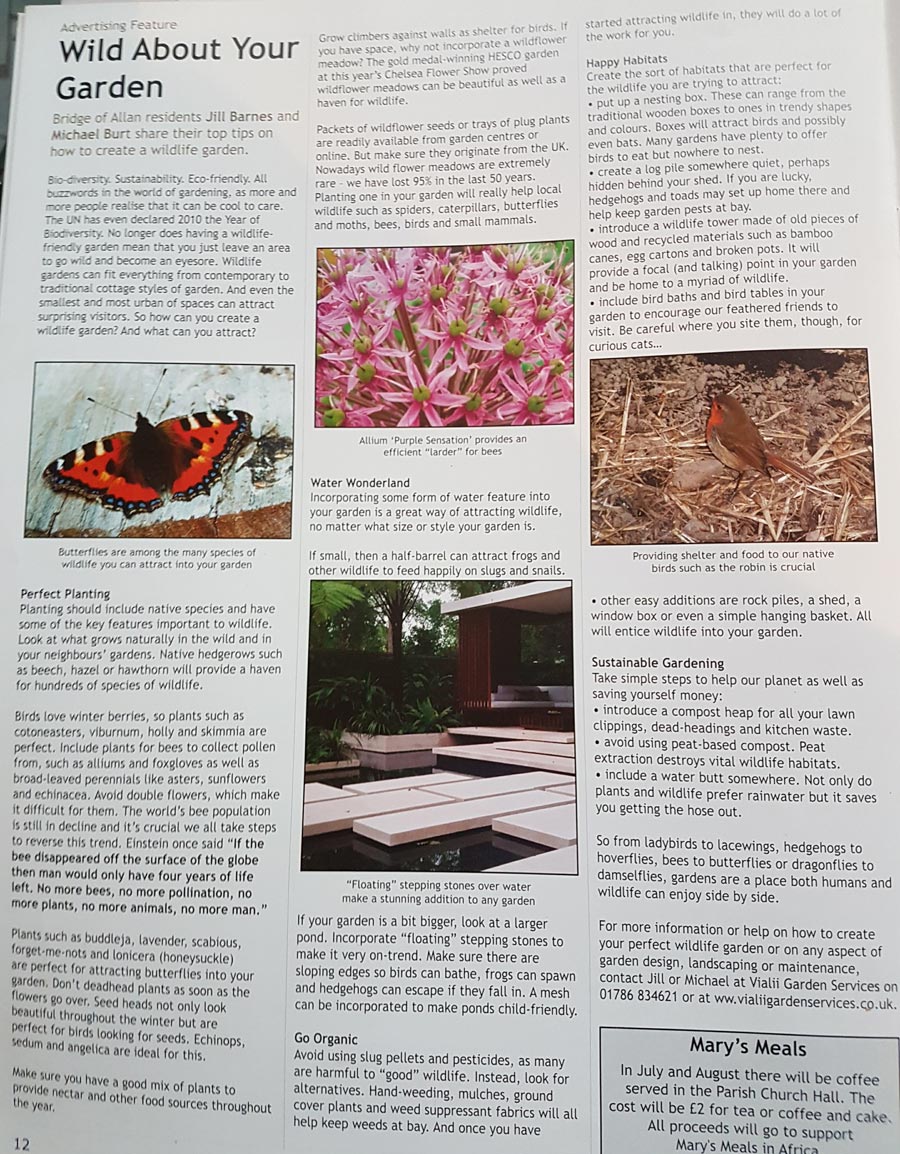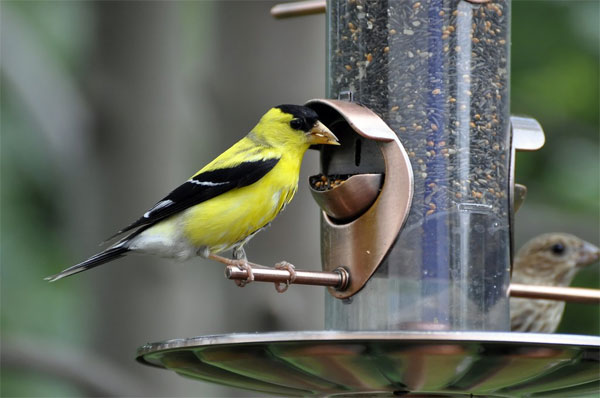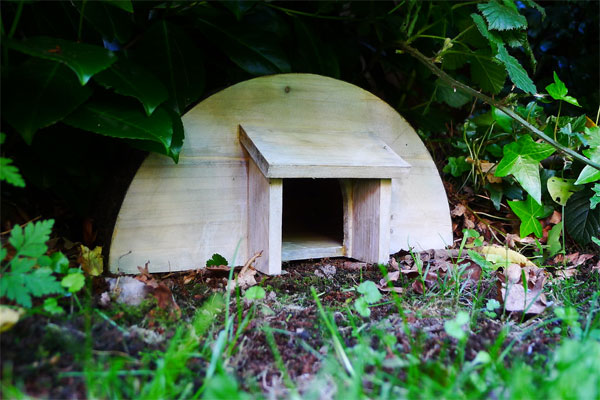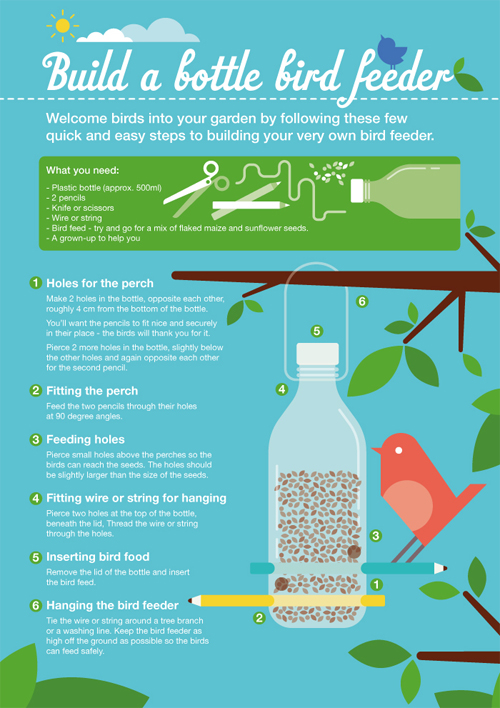3 Ways To Help Wildlife This Winter
The clocks have changed, the frosts have arrived and Strictly is well under way. It can only mean one thing – winter is creeping ever closer! And whilst we can snuggle indoors with our central heating and cosy PJs, life’s not quite as comfortable for some of our garden friends. So we have created a blog with 3 ways to help wildlife this winter in your own back garden…
Feed the Birds
If you’re anything like us you will be singing Mary Poppins as you read this! But feeding the birds is an incredibly simple way to help our feathered friends. Pop up a range of bird feeders and you can quickly be feeding them fat balls and various seeds and nuts. You will be rewarded with a display of lots of lovely birds in your garden who will also help keep garden pests at bay. Remember to leave some water out for drinking and bathing too.
A Home for a Hedgehog
Hedgehogs are brilliant for the garden, munching away on your slugs and snails. Encourage them to stay in your garden by creating a home in a quiet, untouched corner of the garden. You can buy a hedgehog house in your local garden centre or if you are feeling creative you couild build your own with some pieces of wood. Remember to clear out your hedgehog house each year to keep it free from pests (make sure there are no hedgehogs resident at the time of cleaning!) Keeping a corner of your garden a little bit untidy with piles of leaves will encourage hedgehogs into your garden too. ALWAYS check bonfires before lighting them at this time of year too to make sure no hedgehogs have made a home there.
Bat Boxes
Another wonderful wildlife creature you should encourage are bats. They eat squillions of midges every night so they have got to be a firm friend! We love watching our local bats swooping around at dusk giving us an amazing display! Buy or make a bat box but make sure you locate it in a suitable place. It should be a minimum of 10 foot off the ground, higher if possible. It should be in a sunny location, getting at least 6-8 hours of direct sunlight every day. Try and shelter the boxes from the wind and ideally locate them close to where they will be feeding, close to hedges and trees.
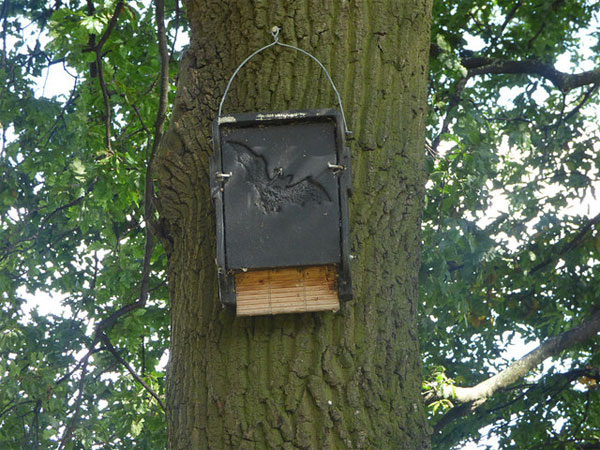
East Park – bat box
cc-by-sa/2.0 – © Stephen Craven – geograph.org.uk/p/5517504
If you can do at least one, if not all of these three simple jobs this winter your wildlife garden will thrive and these wee creatures will be very thankful.
Vialii
Make Your Own Bird Feeder
It’s been a busy start to 2018 for me as I turned 6 and started going to Beavers. On my very first week there we made a cool bird feeder from an old bottle which made me think I should show you how to make your own bird feeder using some things from around the house. It’s still really cold outside so our feathered friends need as much help as possible and it’s a great craft activity for half term!
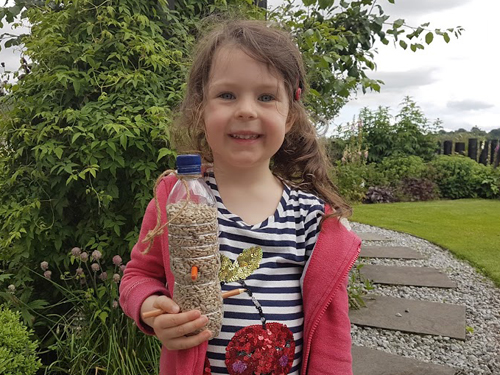
You will need:
- A plastic water bottle
- Scissors
- Two old pencils or sticks
- Some string
- Bird food
To make:
1. Carefully add 2 pairs of holes in the bottle where the pencils will be pushed through. Make sure that each pair of holes are the same height. You may need a grown up to help with making the holes as it can be tricky.
2. Push your pencils/sticks through to make perches for the birds.
3. Add some small holes above each perch so that the birds can access the bird food (not too big though or the seeds will fall out)
4. Tie string round the top which you will use to hang it up
5. Fill with bird seed and put your lid back on (to keep your seed dry)
6. Now it’s ready to hang outside!
We have ours hanging in our apple tree and can see it easily from the house and watch birds coming for their tea!
Enjoy making yours.
Lulu x
Beautiful Butterflies
Butterflies are indeed pretty as flowers plus they help pollinate plants whilst they feed on the nectar. Most species of butterflies don’t have caterpillars that eat our crops so we should be encouraging these pretty pollinators in our gardens. As the Big Butterfly Count has just started, I thought I’d find out just what we can do.
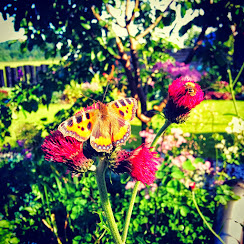
Why us gardeners like butterflies
Apart from them looking really, really pretty that is! Butterflies pollinate plants as they drink their nectar. Since a butterflies’ legs and proboscis are further away from their body than those of bees, they are not quite so good at pollinating our plants. But they can fly further and so help ensure our native wildflowers grow in lots of places for lots of us to see. Also they can help reduce the effect of bee diseases on pollination.
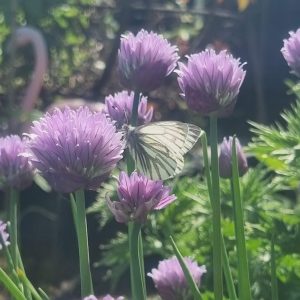
Big Butterfly Count 2015
From July 17th there has been a big butterfly study carried out by people like you and me all over the country. Last year a massive 44,000 people took part. It’s called the Big Butterfly Count and will find out how healthy nature is. Butterflies react really quickly to changes in our environment so they are great at warning us early of problems. Also it is good to know if any types of butterflies need more help from us so we can make sure they get back to being happy. To take part you just need to try to sit still somewhere nice and sunny (so the hardest part will be finding sunshine in Scotland then!) for 15 minutes. Then count how many of each different type of butterfly you see. Once you know what type of butterflies you saw you can input your results into the Big Butterfly Count website. Your work will still count even if you don’t see a single butterfly. If you’re aged between 5 and 10 you can take part in the Count at Jupiter Urban Wildlife Centre on Wednesday July 29th. The Big Butterfly Count runs until 9th August.
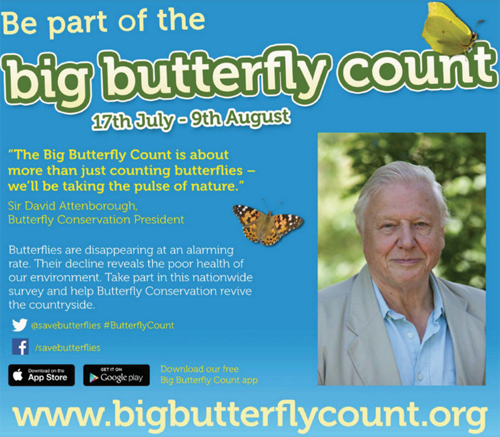
I’m taking part so why don’t you?
Gardening for butterflies
There are 59 different types of British butterflies. But Red Admiral, Peacock, Brimstone, Painted Lady, Comma, Green-veined White, Small Tortoiseshell, Small Cabbage White and Large Cabbage White are the butterflies you’re most likely to see in your garden.To see more butterflies you should plant a range of flowers and herbs to provide them with nectar from March until October. Basically butterflies like bright colours and flowers that provide big landing sites for them. They like you to leave any over-ripe fruit that falls from your trees on the ground so they can feed on the fruit juices. Mummy butterflies also need somewhere to lay their eggs. As silly as it may seem, leaving a bit of your garden to grow weeds in is a great help! Red Admirals love to lay their eggs on stinging nettles and Painted Ladies will lay eggs on thistles. And of course the caterpillars are very hungry when they first hatch so they will munch on these weeds.
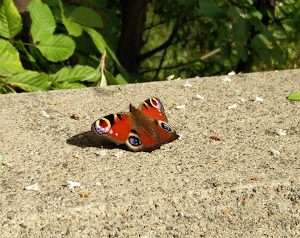
Coping with very hungry caterpillars
So the bad bit of encouraging butterflies is caterpillars. But they are very picky about what they eat and it is only really the Large and Small Cabbage White varieties that like to eat crops that we grow. They love cabbages and other brassicas (like broccoli) and nasturtiums. So if you don’t like eating either of those, don’t grow them and you’ll not get any pesky caterpillars trying to eat your food! Just by growing some nasturtiums beside your brassicas can save your crops as nasturtiums are butterflies favourite food (I prefer ice cream myself!) Or you can be very careful about looking out for little clusters of round yellow eggs on leaves and stems. Just remove these before they hatch into caterpillars. Or you can use insect barrier mesh over your veg beds. Be careful that the mesh doesn’t touch any leaves as abbage White butterflies can lay their eggs through mesh onto any touching leaves. You could also use teeny, tiny worms called nematodes or really small wasps that are both natural ways to kill caterpillars.
Butterfly Craft
Butterflies don’t live for very long so how about making a caterpillar that changes into a butterfly for you to keep for ever?
You’ll need:
- A cardboard egg box
- Sticky tape
- Paint
- One piece A4 white card
- One piece A4 coloured card
- Two pipe cleaners each cut in half
- Googly eyes (or you can draw on eyes)
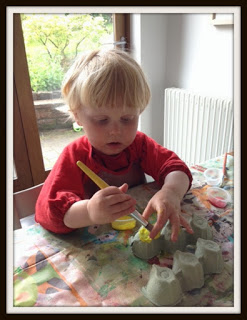
My caterpillar is going be lovely and bright
Roll up both halves of one pipe cleaner to make 2 antennas and insert these above the googly eyes.

This caterpillar is almost as hungry as I always am!
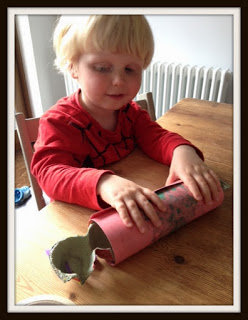
The caterpillar will have a lovely nap in his cosy cocoon
The next day remove cocoon and use the other pipecleaner to fix the wings to the body. Unravel the antenna a bit.
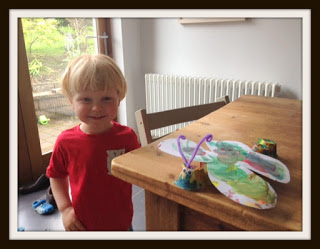
Look what I found when I came down to breakfast!
Thanks “Local Fun for Kids” for the idea.
Right, It’s sunny outside so I’m off to count butterflies! If you want to find out more about the different butterflies you can find in your garden have a look at the fab UK butterflies website. They have loads of great photos.
Big hugs,
Euan
The Plight of the Bumblebee
Hopefully all the yummy crops in your garden are growing well and you can start to see berries, fruit and veg appearing on your plants. If you can, it is likely that pollinating insects like bumblebees have been out and about in your garden. Bumblebees look really cute and with big bodies and tiny wings don’t look like they should able to fly. Like me they aren’t happy being told what they can’t do so they do fly just to spite the mathematician boffins! I thought I’d find out a bit more about them and how they help in our gardens and what we can do to help them in return.
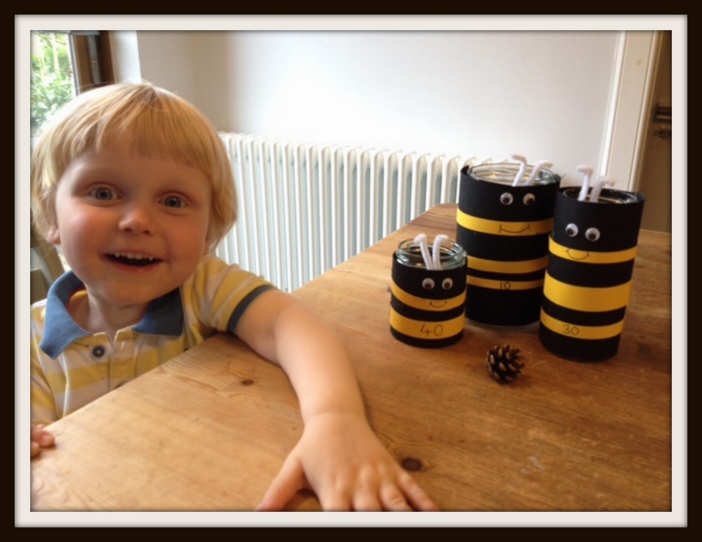
Read on to find out what I’m making…..
Bumblebee facts
- There are 250 types of bumblebee in the world, 24 in the UK but you’re likely only see 6-8 kinds in your garden.
- You can mainly tell the types apart by the colour and number of their stripes.
- They live in nests of 50-400 bees in the ground or in piles of old leaves.
- Each nest has one Mummy who is in charge (just like my home then!) She is called the Queen. The daughters all do the work in the nest and the few sons leave home when fully grown and sleep on flowers.
- The Queens sleep all winter (a lovely long sleep called hibernating) and then wake in Spring and lay eggs to start a whole new nest.
- Bumblebees have 5 eyes! They have 3 larger ones at the sides their heads and 3 little eyes on top of their head.
- Female bumblebees can sting, but only if you scare them. Their stings are like those of wasps- they don’t have any sticky-out bits to get stuck in the skin so the bumblebee can remove it and sting again. Honeybees can only sting once.
- Their buzzing noise isn’t made by their wings but by vibrating muscles!
- Their left and right wings don’t flap together, each flaps on its own.
- The speed and noise that their buzz makes (its frequency) is perfect for releasing large amounts of pollen from tomatoes. Now almost every single European tomato we buy is due to a bumblebee’s buzz, wow that’s a lot of buzzing as I can eat LOADS of tomatoes all on my own!
How Bumblebees help us
Bumblebees drink the sugary juice called nectar that’s in flowers and they collect yellow dust called pollen to feed to their babies. When they do this they “pollinate” the flowers and that lets them turn into fruit and veg. They are faster pollinators than honeybees as they can visit twice as many plants every minute and all their hairs means nectar sticks all over them. Being bigger they can carry more pollen and so can go on longer foraging trips. They are hardy insects, not put off by drizzle or winds- perfect for Scotland. They are happily active at temperatures down to 10°C. They aren’t as scared of enclosed spaces such as greenhouses as honeybees are, so do more of the pollinating on indoor crops. In fact some bumblebees are grown just to pollinate crops such as tomatoes, courgettes, strawberries and peppers grown by farmers inside greenhouses. In the UK bumblebees, solitary bees and hoverflies also pollinate 97% of our wild flowers.
Helping bumblebees
Two types of bumble bee have disappeared from our gardens in the last 80 years. If we don’t want to lose any more types we can grow their favourite plants in our gardens. Wild flowers such as foxgloves, daisies and buttercups have lots of nectar and pollen. Our countryside used to be filled with wild flower meadows but these have been disappearing. We can plant these in our garden. Or we can plant tasty herbs such as rosemary, chives, thyme, sage and marjoram to feed bumblebees and us.
Remember to try to plant different flowers that bloom from Spring through to Autumn- we’d not be happy if we could only eat in June and July! Also, different types bumblebees have shorter or longer tongues so need flowers of different sizes too so they can find their perfect fit- just like Goldilocks and the 3 bears! Some bees manage get around this problem by nibbling a teeny hole in the base the flower so they can still get access to the nectar- how smart are they?!
Learn how bumblebee friendly your garden is by finding out your Bee kind score and then you’ll get help picking other favourite bumblebee flowers to plant alongside those you already have. My garden got a score of 2604, not too bad as the average in Scotland is 2061.
If you ever come across a bumblebee lying on the ground looking tired/unwell you can try to help by feeding them a mixture of 1 teaspoon of sugar in 1 teaspoon of water and placing that near the bee’s head. It should then stick out its really, really long tongue, lap up the sugary water and then use the energy to fly off. Never try to keep a bumblebee inside, they need to be outside foraging, building a nest or hibernating.
Identifying bumblebees
It’s fun to learn what types of bumblebee you have in your garden. You need to begin by making sure it is a bumblebee and not a honey bee. Bumblebees are normally bigger and hairier than honeybees or solitary bees. Next work out what colour its tail is and how many bands it has on its body. Finally look to see if there is a ball of pollen (or a shiny surface ready cover with pollen) on its back legs. You can even get involved in the Bumblebee Conservation Trust’s Bee Watch survey. You just need to take a photograph of the bumblebees that you see and then upload it to their webpage telling them the date and time the photo was taken. The tools help you work out the type of bumblebee (don’t worry an expert bumblebee identifier -what a cool job – will check your answer later) and your bumblebee will become part of their survey results. All the results will help brainy people check on what types of bumblebees are found where and how many of them there are just in case any types need extra special help from us.
Bumblebee craft
Here’s a great way to use old jars of plastic bottles and turn them into a fun craft project and game.
You’ll need:
- empty, clean jars or plastic bottles (if using bottles get a grown up to cut off the top third)
- black, yellow and white paper or card
- googly eyes (or you can just draw eyes on)
- pipe cleaners
- glue
- marker pen
- scissors
- a small pinecone (or you can use a little ball)
To make:
- Start by covering the outside of your jar with glue.
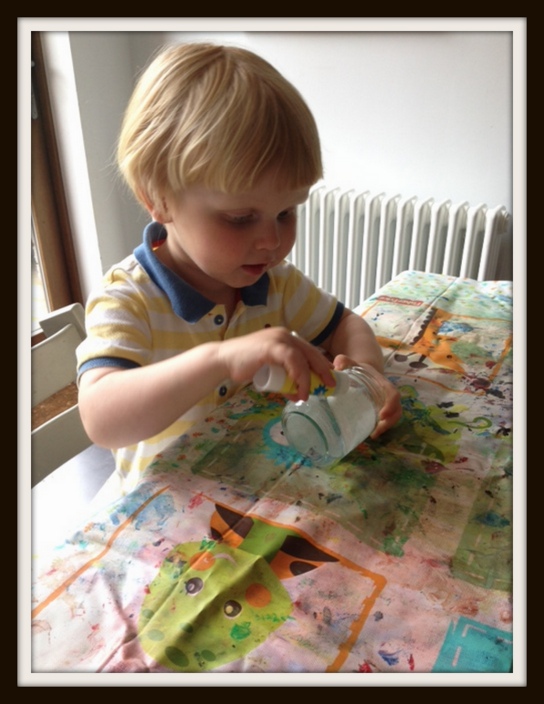
Gluing on the black body- be extra careful when holding glass jars
2. Wrap a piece of black paper around the jar.
3. Cut the yellow paper into strips
4. Glue a couple of yellow strips around the black jar to make bumblebee stripes.
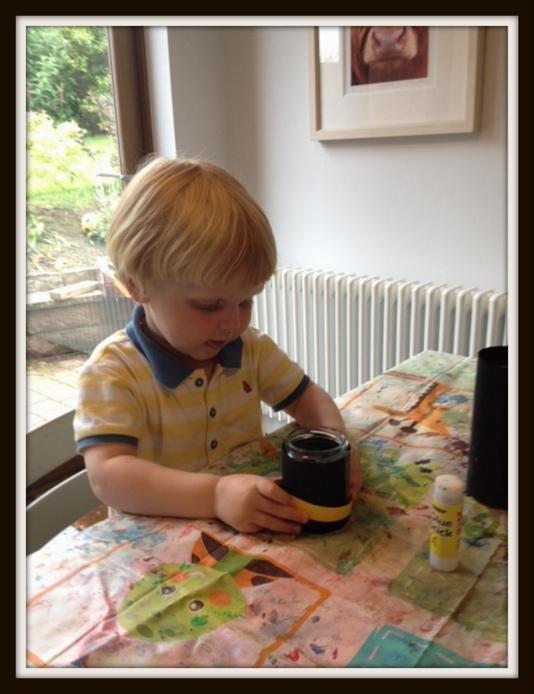
This bumblebee will have almost as many yellow stripes on his tummy as me!
5. Stick on googly eyes near the top of jar.
6. Make antennas out of pipe cleaners and slip this in between paper and jar.
7. Draw on a face.
8. Cut out some wings from white card and glue these onto back of jar.
9. Write numbers on the front to tell everyone how many points you’ll get for throwing the cone into that bumblebee.
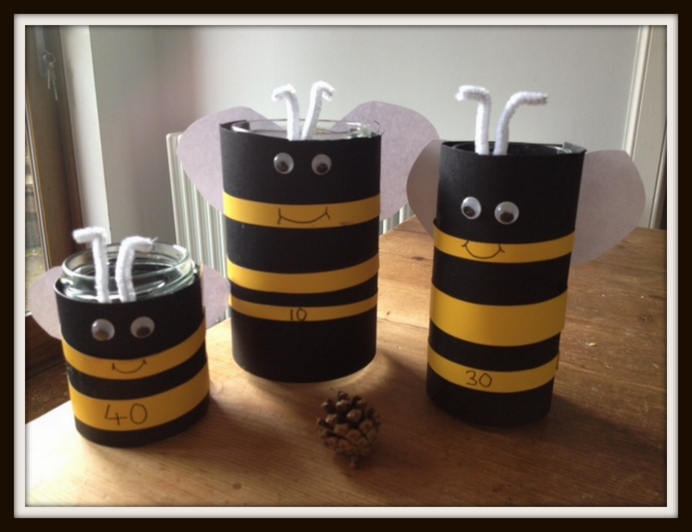
My hungry bumblebee family
Now you have a fun game where you can take turns to throw the pinecone “pollen” into the hungry bumblebee’s tummy. See who can score the most points!
Remember, if you enjoy eating tomatoes and strawberries or looking at pretty wild flowers as much as I do, please help out in the plight of the bumblebees and grow a few more bee friendly plants in your garden.
Big hugs
Euan xx
Wild Child!
Sometimes M&D say I am a wild child – I think they mean that as a compliment 
Be a bit messy!
Now isn’t this just the best tip ever?!? An overly tidy garden means there are less places for wildlife to hide. So leave a few piles of leaves or upturned pots in quiet areas of the garden and you may find some invertebrates or hedgehogs come along and make a home for themselves. Ladybirds gather in large clusters on dead plant stems in quiet areas of the garden so don’t prune plants too much just now, wait until the end of winter. Also, avoid cutting your hedge until the end of winter so as not to disturb nesting birds or remove any berries. Wonder if this messy logic applies to my bedroom…
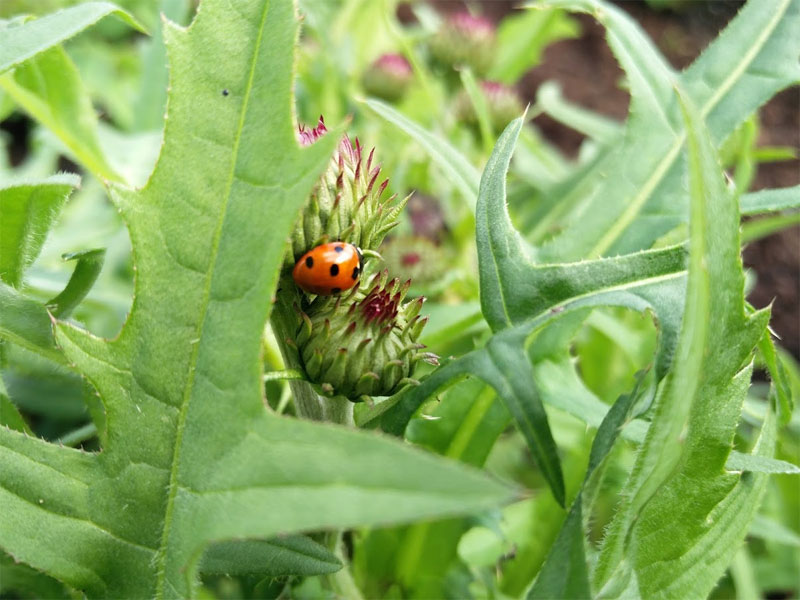
A ladybird in our garden
Empty nesters!
If you haven’t already done it, clean out those nesting boxes so that birds have somewhere cosy to shelter through winter. Double check no-one is in there nesting already before you disturb them though!
Feeding Time
It’s important to feed our wildlife over winter when their natural source of food isn’t readily available. As well as using traditional seeds, peanuts, fat balls etc on bird tables and feeding stations consider the planting in your garden. Berries and seedheads are popular with many birds as well as looking pretty and adding winter interest. And windfall fruits can provide food for wildlife. Remember to clean out our bird feeders regularly and keep them hygienic. (It’s not just us kids that have to wash our hands and stay clean!)
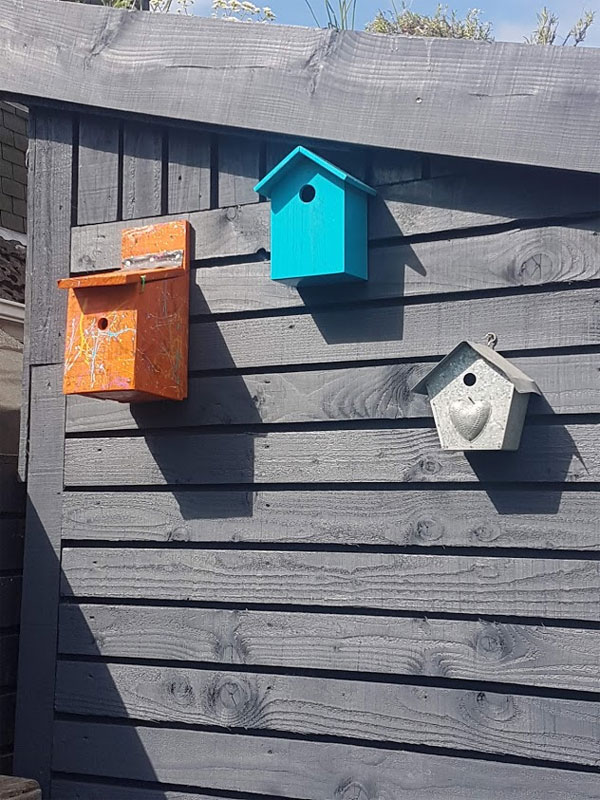
Clear out your bird boxes ready for new visitors
Hole in One
Ask a grown up to drill some holes into old logs or some left over wood your M&D may have left over from a DIY project and leave them in a quiet corner. Insects and bees will make a home here over winter.
Perfect Planting
Winter is a great time to review your garden and think you want to do in the year ahead. If there are plants you don’t like too much and aren’t providing much for wildlife or providing winter interest then look at removing some and adding in some lovely new plants that wildlife adore like foxgloves, verbena, echinops, sedum or plants with berries such as holly, skimmia and rowan.
Hopefully all sorts of wildlife will now have a cosy home and plenty to eat in your garden. But if you want to have some wildlife in the house then why not try this great hedgehog craft project…
Hedgehog Hands
You will need:
- Some coloured paper
- Pencil
- Scissors
- Toilet roll tube
- Pom pom
- Googly eyes
- Glue
To make:
1. Draw round both hands on some coloured paper. To make it quicker, put four sheet of paper together so you can cut through them all at once. Do this again on another colour of paper to create contrasting spikes. We chose brown and orange as they are nice and autumnal but any colour would be fine. I think a purple and pink glittery hedgehog would be cool!
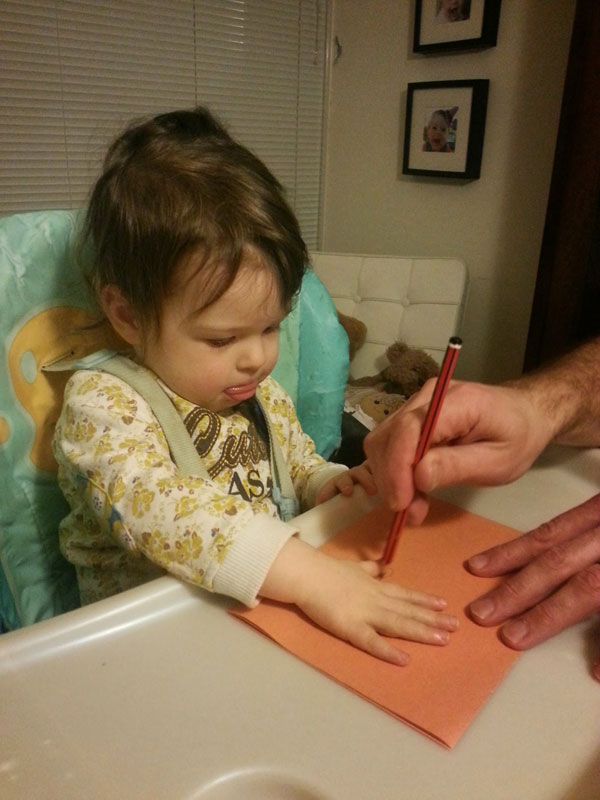
Draw round your hand on coloured paper
2. Take a toilet roll and ask a grown up to cut it down a little smaller. Then cut it in half long ways to open it up. You then need to roll it again at a diagonal so that it forms a cone. Glue it in place and then cover with some coloured paper.
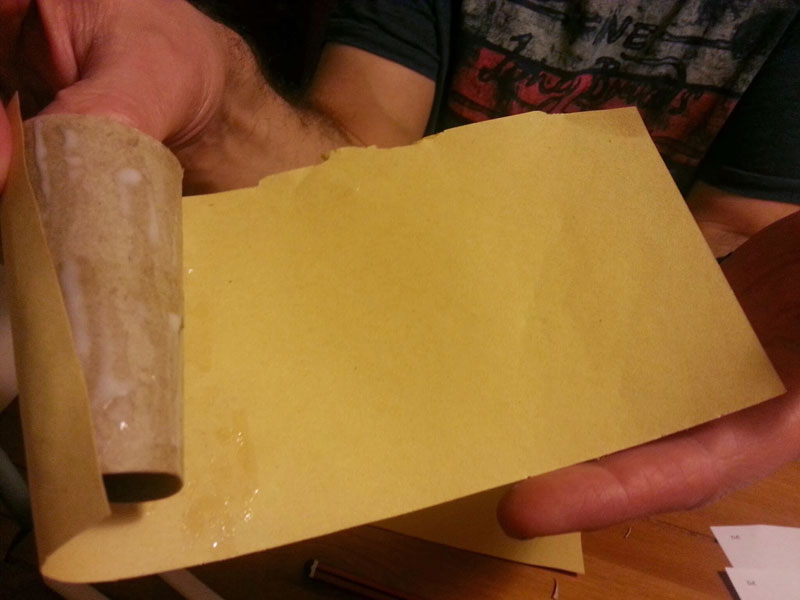
Make your pointy face from a toilet roll and coloured paper
3. Glue your paper hands onto a piece of card to make the hedgehogs spikes.
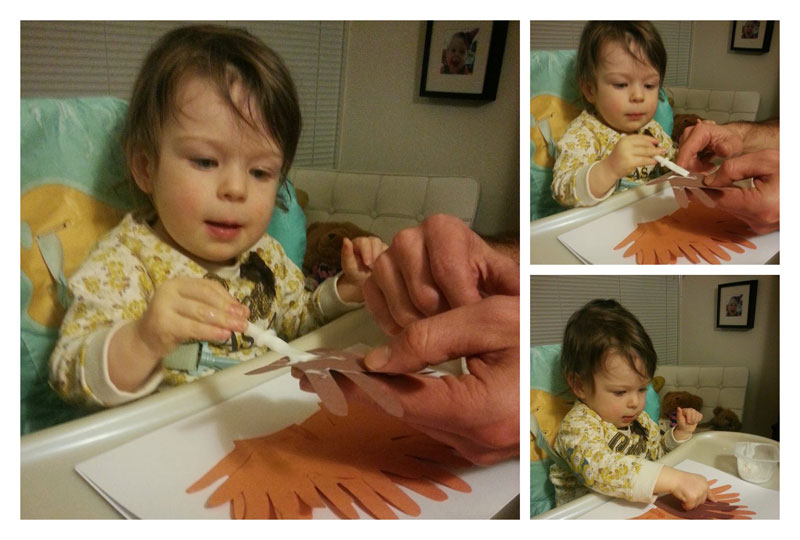
I love gluing and sticking!
4. Glue your cone onto the hands to make a pointy face. Add the pom pom to the end to make a nose and add some googly eyes (or buttons) to the face.
5. Fold up the spikes a little to make them spikier and more 3D.
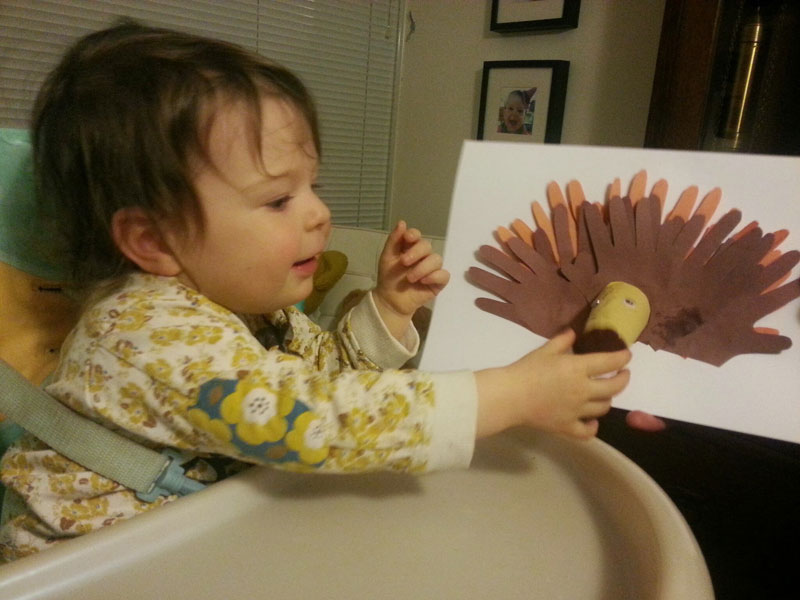
The finished 3D hands hedgehog
1. Sometimes M&D call me a pest too but I don’t think that’s a compliment!)
Thanks to the clever people at Fantastic Fun & Learning for the inspiration for this project.
Wild About Your Garden
Bio-diversity. Sustainability. Eco-friendly. They are all buzz-words in the world of gardening as more and more people realise that it can be cool to care. The United Nations have even declared 2010 as the Year of Biodiversity. No longer does having a wildlife garden mean that you just leave an area of your garden to go “wild” and inevitably become an eye-sore.
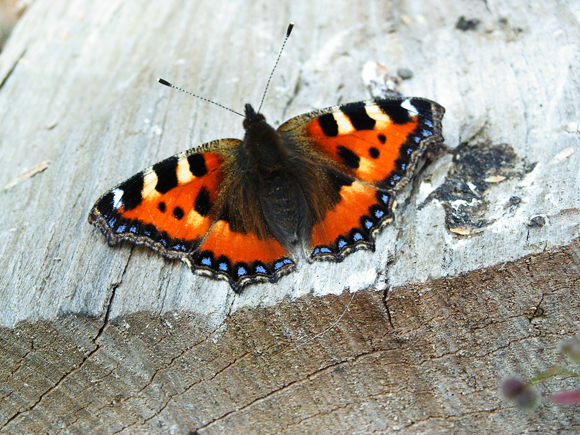
Having a wildlife garden can be truly beautiful
Even the Chelsea Flower Show this year featured heavily on wildlife gardens with one garden planted entirely with a wildlife meadow. Wildlife gardens can fit whatever style of garden you choose, from contemporary to traditional cottage garden. And even the smallest and most urban of spaces can attract the most surprising of visitors.
So, how can you create a wildlife garden and what, more interestingly, can you attract?
Perfect Planting
Planting should include native species and have some of the key features important to wildlife. Look at what grows naturally in the wild and what grows really well in your neighbours’ gardens. Native hedgerows such as beech, hazel or hawthorn will provide a haven for hundreds of species of wildlife.
Birds love winter berries so plants such as cotoneaster, viburnum, holly and skimmia are perfect.
Include plants that are efficient for bees to collect pollen from such allium, echinops and foxgloves as well as broad-leaved perennials which allow easy access for bees such as asters, sunflowers and echinacea. Avoid double flowers which make it difficult for bees to access pollen.
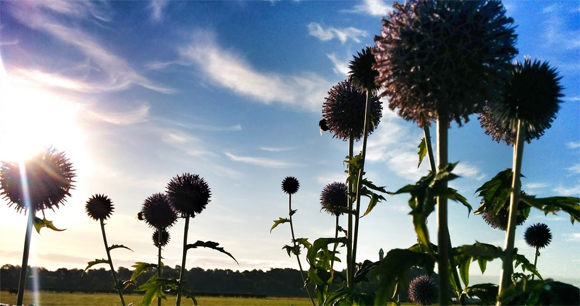
The bees loving the echinops in our garden
The world’s bee population is still in decline and it’s crucial we all take steps to reverse this trend. Einstein once said “If the bee disappeared off the surface of the globe then man would only have four years of life left. No more bees, no more pollination, no more plants, no more animals, no more man.”
Plants such as buddleja, lavender, scabious, forget-me-nots and lonicera (honeysuckle) are perfect for attracting butterflies into your garden.
Don’t deadhead plants as soon as the flowers go over. Instead leave seed heads which not only look beautiful throughout the winter but are also perfect for birds looking for seeds. Ideal for plants such as echinops, sedum and angelica.
Different species of trees and shrubs provide nectar and other food sources throughout the year so make sure you have a good mix of plants.
Grow climbers against walls to provide shelter for birds.
If you want to take it a stage further and if you have space, why not incorporate a wildflower meadow. The gold winning HESCO garden at the Chelsea Flower Show this year proved wildflower meadows can be beautiful as well as a haven for wildlife. Packets of wildflowers seeds or trays of plug plants are readily available from garden centres or online these days but make sure they originate from the UK.
Wildlife such as spiders, caterpillars, butterflies and moths, bees, birds and small mammals will all be tempted into your wildflower meadow. Nowadays wild flower meadows are extremely rare – we have lost 95% in the last 50 years. Planting one in your garden will really help local wildlife.
Water Wonderland
Incorporating some form of water feature into your garden is a great way of attracting wildlife. Water can be incorporated no matter what size or style your garden is and can be made child-friendly too.
If your garden is small then even a half barrel can be made into an effective water feature and will attract frogs and other wildlife which will feed happily on slugs and snails.
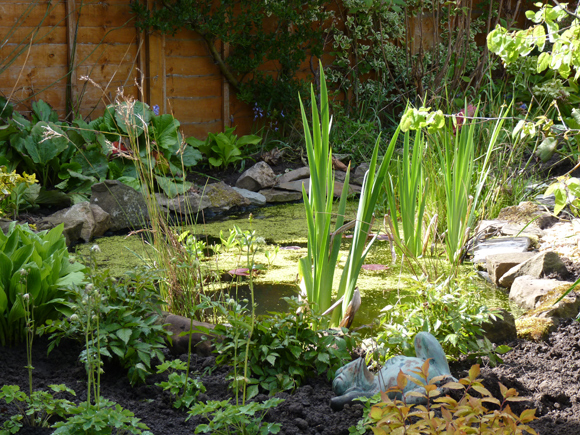
Water is a great way to attract wildlife into your garden
If your garden is a bit bigger, look at a larger pond. Incorporate “floating” stepping stones to make your pond very on-trend. Make sure there are sloping edges to your pond though so birds can bathe, frogs can spawn and hedgehogs can escape if they fall in. A mesh can be incorporated to make ponds child-friendly too.
Go Organic
Avoid using slug pellets and pesticides. Many are harmful to the “good” wildlife you are trying to attract. Instead look for alternatives. For weeds, hand-weeding, mulches, ground cover plants and weed suppressant fabrics will all help keep weeds at bay. And once you have started attracting wildlife in, they will do a lot of the work for you such as eating slugs.
Happy Habitats
Create the sort of habitats that are perfect for the wildlife you are trying to attract:
Put a nesting box in your garden. These can range from the traditional wooden boxes to boxes in trendy shapes and colours to suit all styles. Boxes will attract birds and possibly even bats. Many gardens have plenty to offer birds to eat but nowhere to nest.
Create a log pile somewhere quiet in your garden, perhaps hidden behind your shed. If you are lucky hedgehogs and toads may set up home there and help keep garden pests at bay.
Introduce a wildlife tower into your garden. It can be built out of old pieces of wood and the different sections incorporate different recycled materials such as bamboo canes, egg cartons and broken pots. The tower will provide a focal (and talking) point in your garden and be home to a myriad of wildlife.
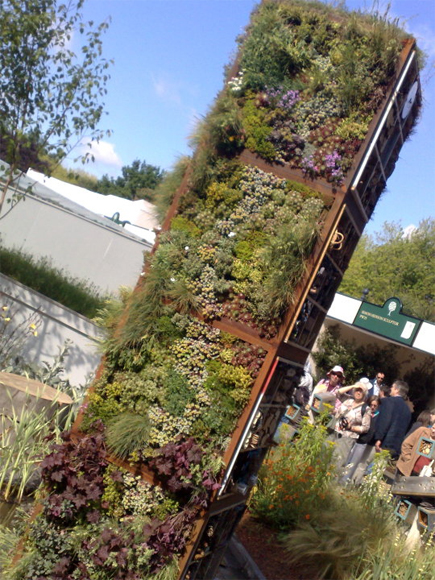
Water is a great way to attract wildlife into your garden
Include bird baths and bird tables in your garden to encourage our feathered friends to visit. Be careful where you site them though for curious cats…
Other easy additions are rock piles, a garden shed, a window box or even a simple hanging basket. All will entice wildlife into your garden.
Sustainable Gardening
Take simple steps to help our planet as well as saving yourself money:
- Introduce a compost heap for all your lawn clippings and dead-heading as well as your kitchen waste.
- Avoid using peat-based compost. Peat extraction destroys vital wildlife habitat.
- Include a water-butt somewhere in your garden. Not only do plants and wildlife prefer rain-water but it saves you getting the hose out.
So from lady-birds to lace-wings, hedgehogs to hoverflies, bees to butterflies or dragonflies to damselflies, gardens are a place both humans and wildlife can enjoy side by side.
We’d love to see pictures and hear stories of some of the wildlife you have tempted into your garden. Please get in touch with some of your tales.
All at Vialii
Bridge of Allan Times
We share our top tips on how to create your own wildlife friendly garden…
